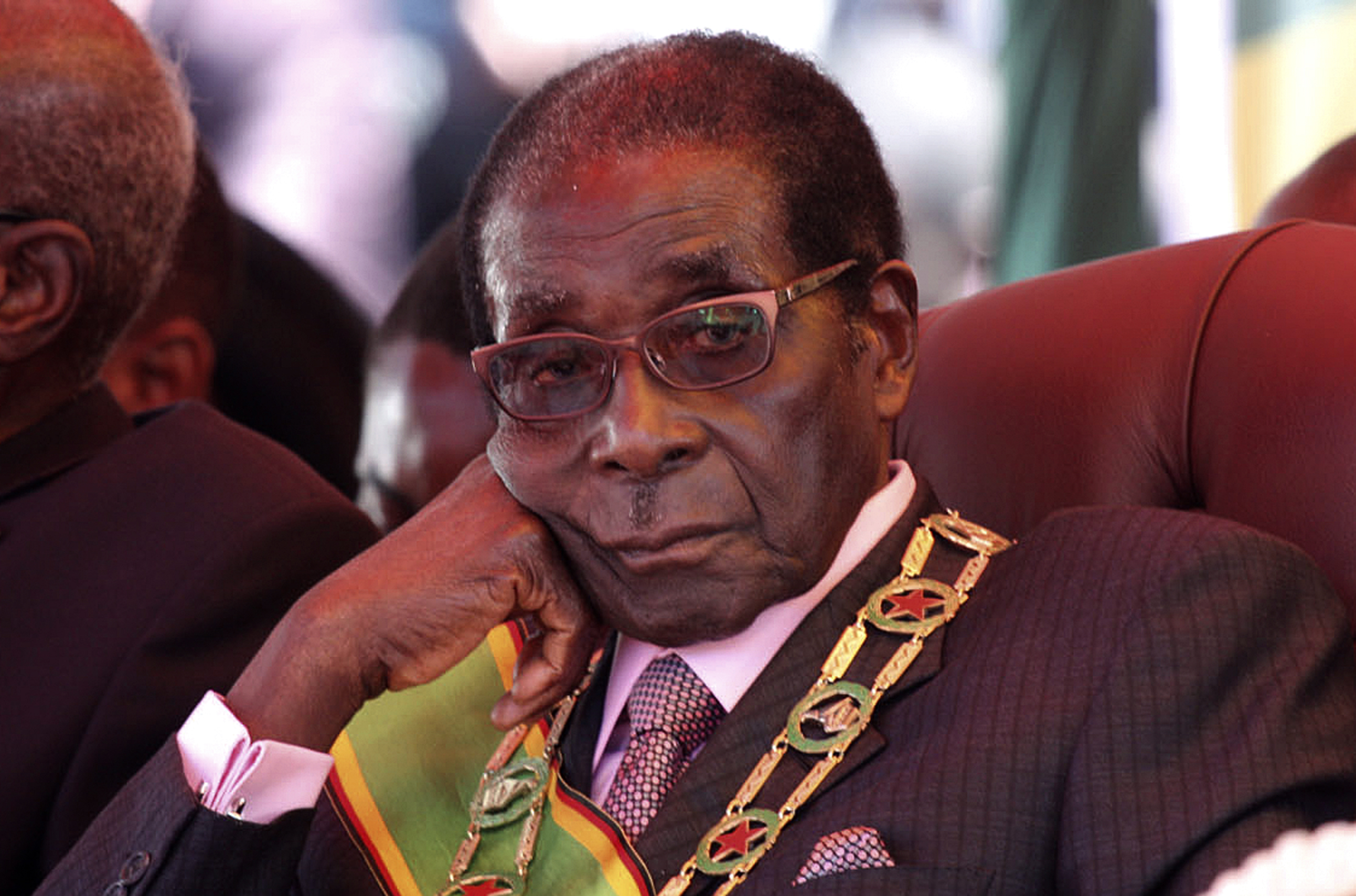
Military intervention in Zimbabwe and Mugabe’s resignation
The armed forces of Zimbabwe are presently involved in the political crisis of that country.
Advertisement
On Wednesday, November 15, 2017, the military announced that it had stepped in to deal with “criminals in Mugabe’s inner circle”.
Major-General Sibusiso Moyo, spokesman of the Zimbabwe Defence Force (ZDF), told viewers on Zimbabwe Broadcasting Corporation (ZBC) television on Wednesday, November 15: “We are only targeting criminals surrounding him who are committing crimes that are causing social and economic suffering in the country in order to bring them to justice.”
Earlier, on Tuesday’s night, November 14, the ZDF led by General Constantino Ohiwenga, had moved and parked tanks outside government buildings.
The ZBC was taken over by the military before the announcement and President Robert Mugabe, 93, and his wife, Mrs Grace Mugabe, had been put under house arrest.
On Sunday, November 19, senior members of the ZANU–PF (Zimbabwe African Nationalists’ Union–Patriotic Front) party held a special meeting in Harare, the national capital, and resolved to remove President Mugabe as head of ZANU-PF.
He has, provisionally, been replaced by the former Vice President, Emmerson Mnangagwa, as head of an interim unity government.
President Mugabe had sacked Mr Mnangagwa, a week before the military intervention.
Mr Mnangagwa, a former national security chief and a lawyer, was a close comrade of Mr Mugabe during the guerrilla warfare activities in the 1970s against the settler government of Mr Ian Smith of Southern Rhodesia – former name of Zimbabwe.
He had worked closely with Mr Mugabe when Mr Ian Smith was forced to step down and Zimbabwe achieved independence from Britain after political and constitutional talks in London.
Relations between Mr President Mugabe and Mr Mnangagwa, who became Vice President and likely successor, began to worsen when Mrs Grace Mugabe, the first lady, launched the Generation 40 faction of the Zanu-PF in 2008.
The climax of the simmering political power struggle for successor to President Mugabe came when Mr Mugabe sacked his Vice President two weeks ago.
The move was ostensibly to prepare the ground for Mrs Mugabe to become Vice President – after an impending party congress next month.
For safety, Mr Mnangagwa fled to South Africa.
Being a war veteran himself and a favourite of the influential Zimbabwe War Veteran Association, Mr Mnangagwa dismissal must have provoked a sharp response from the War Veterans Association whose chairman had asked Mr Mugabe to resign.
Sensing that the feud within the ZANU-PF had developed into an unmanageable proportion, the military, reportedly, stepped in to ask the party to “put its house in order”.
The military intervention has not been described as a coup. The ZDF, at the time of writing still regarded Mr Mugabe as president.
Though under confinement, President Mugabe made a public appearance at a university graduation ceremony in Harare, the national capital, as Chancellor of the university and he also made a nationwide radio and television address.
Thousands of Zimbabweans held protests across the country, and in Harare, protestants marched to the blue roofed house of President Mugabe and called on him to resign.
The ZANU-PF had also officially demanded his resignation but he had, at the time of writing, remained adamant.
Mr Mugabe told Zimbabweans in his broadcast that he would remain president and party leader



